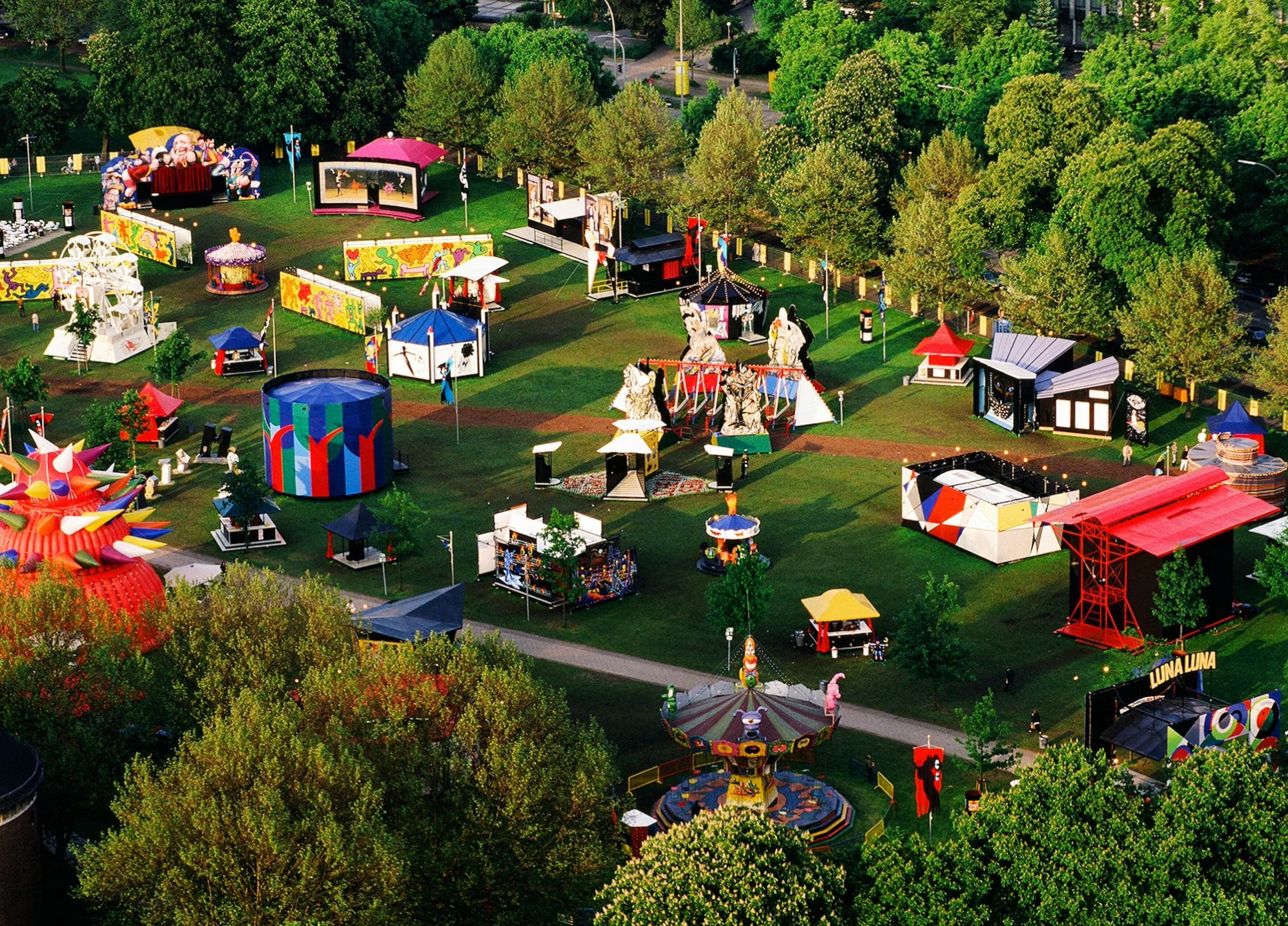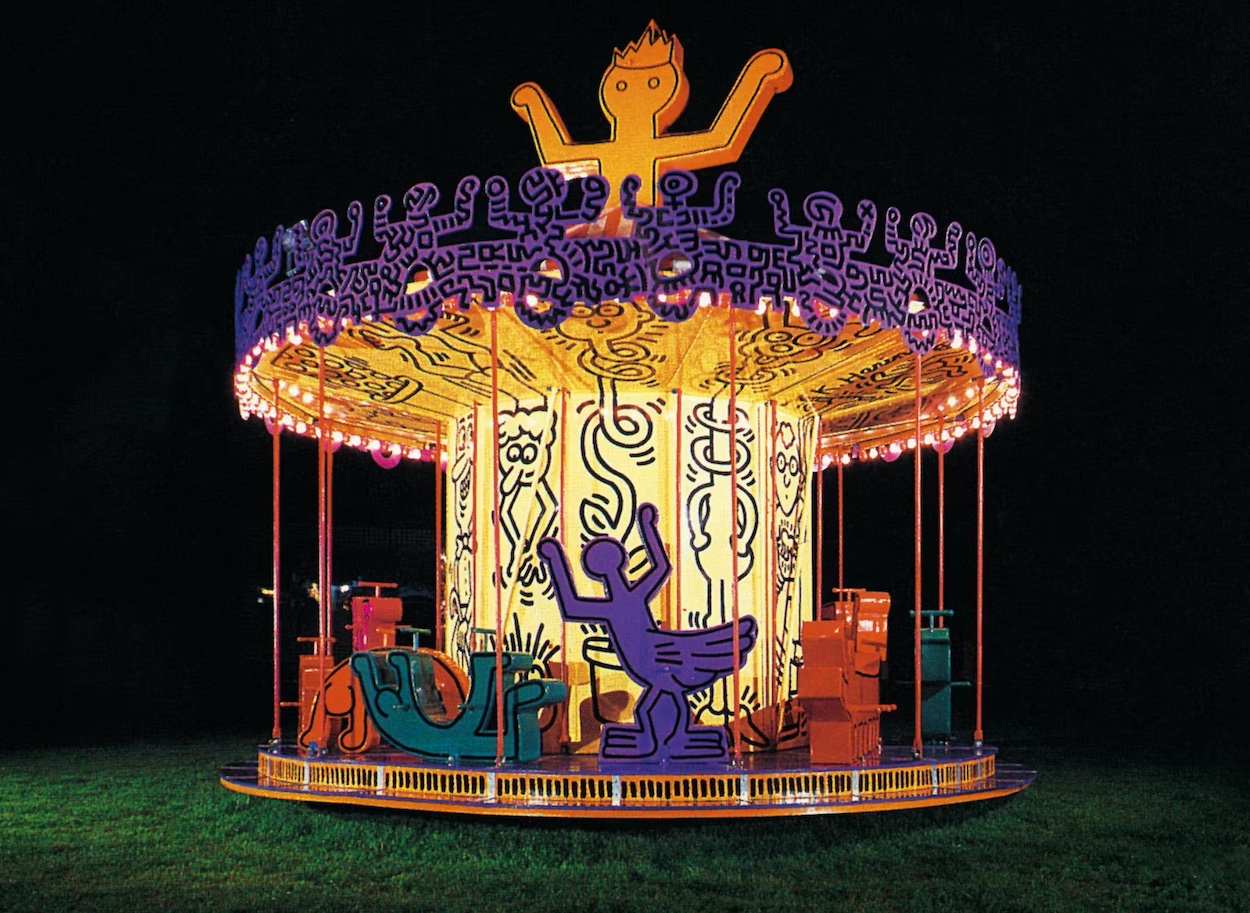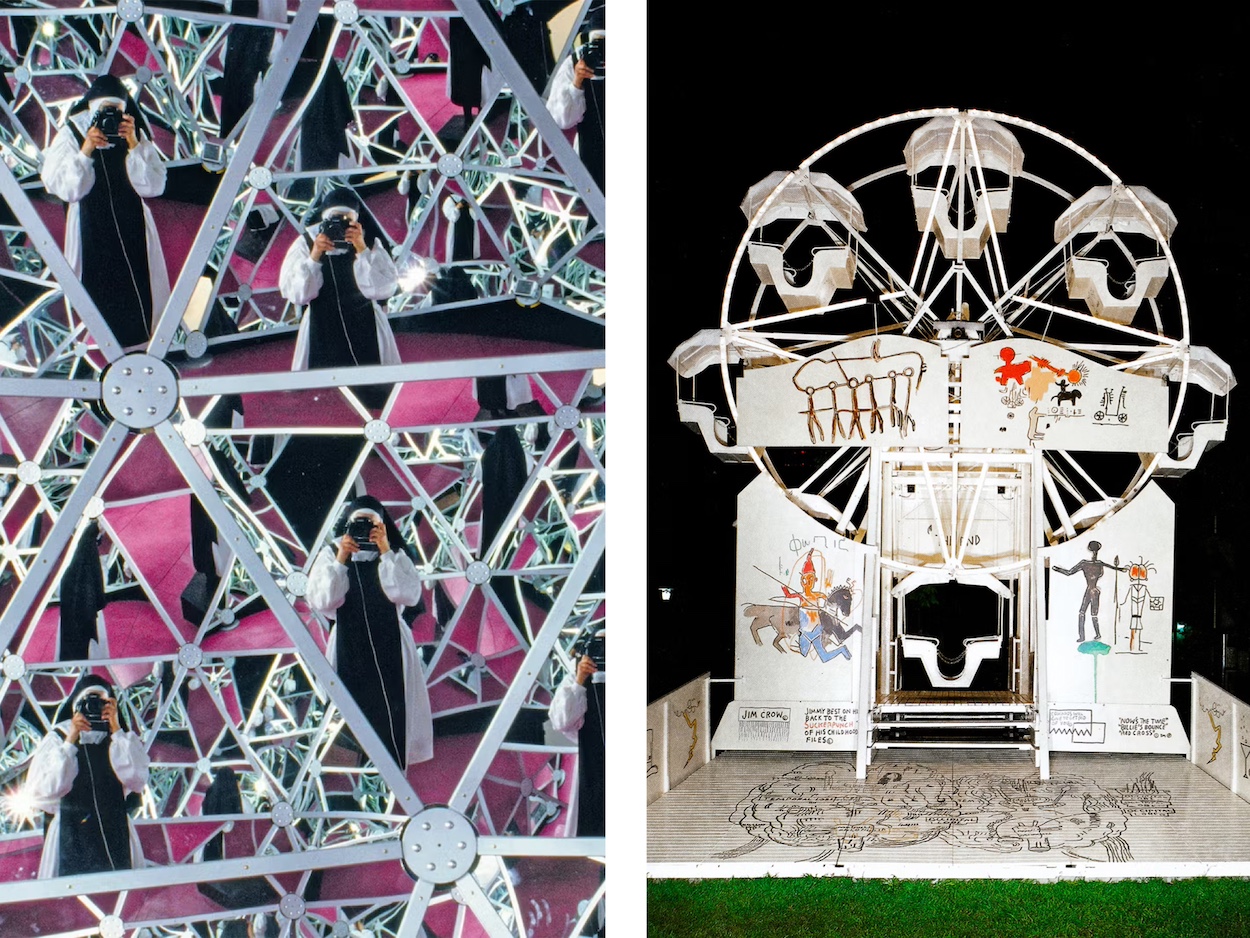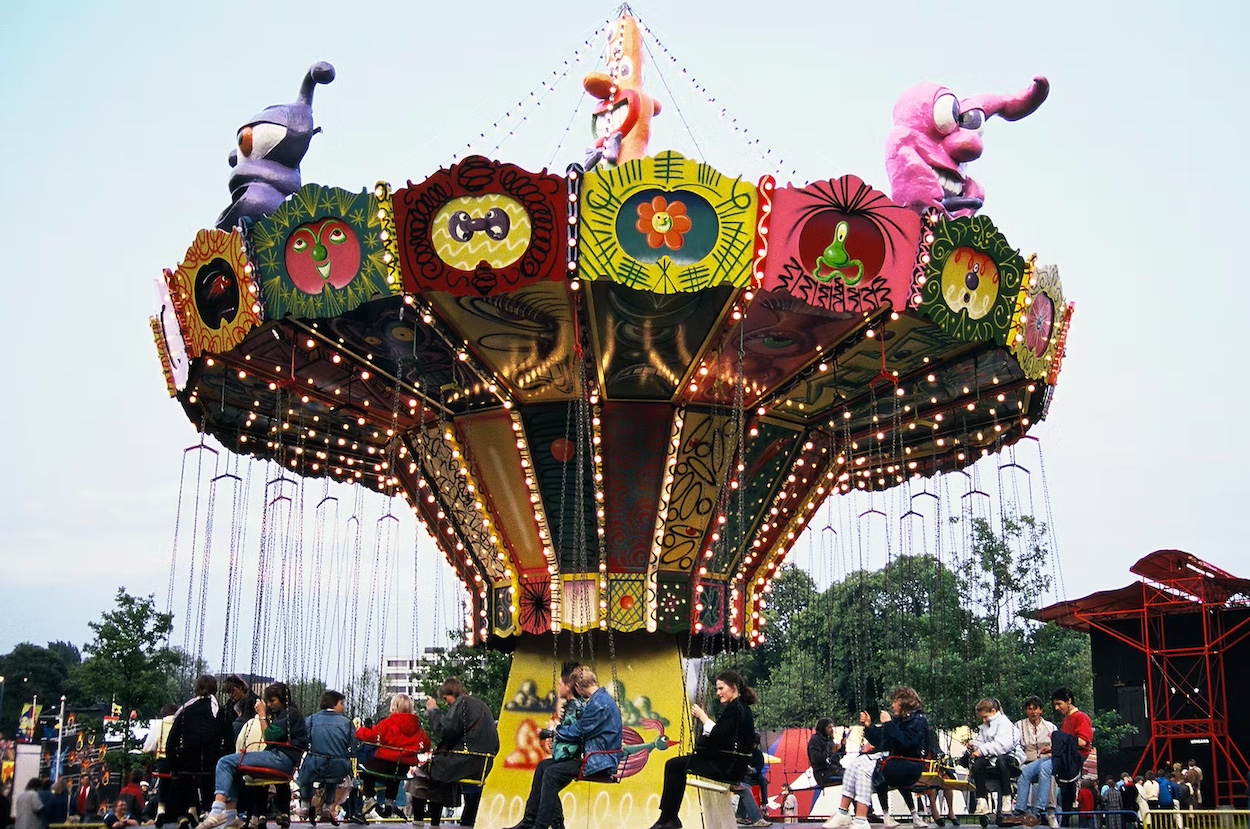For the past two years, a team of restorers has been refurbishing a trove of amusement park rides created by some of the most legendary artists of our time. This is no chintzy rehash of Mickey Mouse ears or a Banksy-esque corporate teardown á la Dismaland, but a fully functioning art carnival that actually existed for one sticky late-‘80s summer in Hamburg. There was a swing ride by Kenny Scharf; a carousel enlivened by Keith Haring’s animated characters; a Ferris wheel given the Basquiat treatment; a “Dalí Dome” that perhaps laid the foundation for Yayoi Kusama’s Infinity Rooms to dominate Instagram decades later. Named Luna Luna, the park was the brainchild of André Heller, the mischievous Austrian artist and impresario who viewed carousels and swings as tantamount to “revolving sculptures.”
The art establishment initially scoffed at Heller’s grand plans for Luna Luna, but a reported 240,000 eager spectators showed up to witness what Life magazine gushed about as “an international art carnival of the avant-garde” that “elevates the mind and makes the jaw drop.” Once the season wrapped and the carousels ground to a halt, however, the rides disappeared for 35 years. Financial, legal, and bureaucratic disputes hamstrung Heller’s plans to bring Luna Luna to San Diego and Vienna. The rides had been sitting abandoned in shipping containers near the remote Texas town of Nocona ever since, an overlooked snippet of the contemporary art canon awaiting a deep-pocketed buyer to bring the carnival back to life.
Given how Luna Luna’s lifespan preceded smartphones, scant documentation exists of it online. In 2019, though, a post from the culture blog “Minnie Muse” landed in the inbox of Michael Goldberg, founder of the creative agency Something Special Studios, whose attention was piqued. He mentioned it in a meeting with DreamCrew, rapper Drake’s entertainment firm, which agreed to invest in Luna Luna’s revival. “When Luna Luna first caught our attention, we knew we needed to be a driving force behind its resurrection,” Anthony Gonzales, a partner at DreamCrew, told the Los Angeles Times. “Not only was this a once-in-a-lifetime opportunity to rediscover a lost history and share the story with the world, but [it] also gave us the ability to work with the most talented partners recreating the original vision, which still held so much untapped potential.”
They soon acquired the park’s assets from the Stephen and Mary Birch Foundation, transported the rides to California, and began painstakingly reassembling them in two sprawling warehouses near Downtown Los Angeles, where Luna Luna’s long-awaited second act will open this month and run through the spring. The aptly named revival “Forgotten Fantasy” brings Luna Luna’s attractions back to life, but don’t expect to ride anything. (Modern safety codes curbed that prospect, and many of the original rides are too fragile to operate.) Instead, it’s all about basking in the carnival’s dusky atmosphere and being wowed by its very existence. Minimal interior lighting and few dividing walls allow the luminous rides to gleam kaleidoscopically, augmented by an ‘80s-themed soundtrack spanning Philip Glass to Europop.
Heller, now 76, isn’t involved this time around, but the park’s roots impart an important history lesson. His father was detained by the Nazis in Hamburg during World War II; on Luna Luna’s original site, they deported Jews to concentration camps. “Heller thought of Luna Luna as a postwar project,” Helen Molesworth, the show’s curatorial adviser and the former chief curator of the Museum of Contemporary Art in Los Angeles, told W. “It asks the question: What needs to happen to make sure that fascism never takes hold again? As much as Luna Luna is a funhouse, it’s a funhouse designed to try and keep you open, curious, empathetic, and childlike so you don’t become a hard, crass person capable of hatred and antisemitism.” The park, its ebullient artistic experiments, and its new beginnings are a reminder to tap into that wonder so history doesn’t repeat itself.




